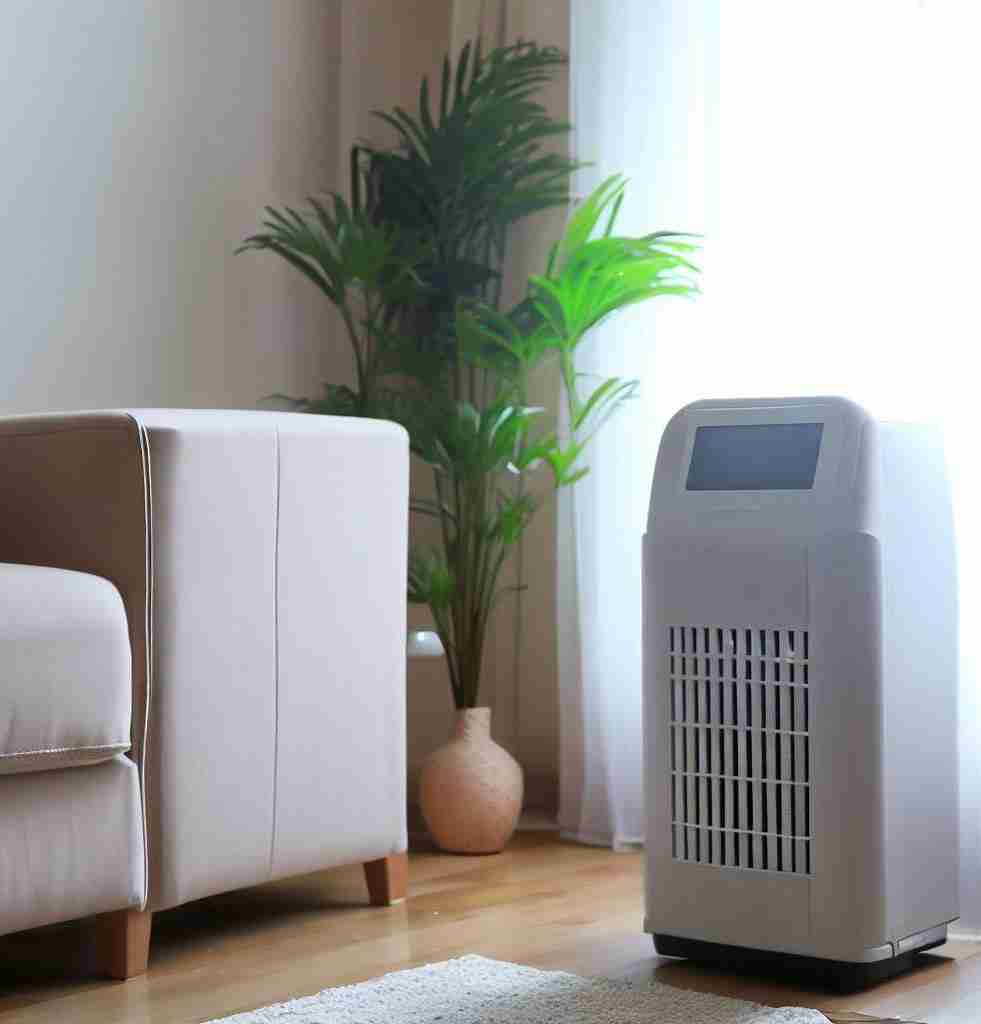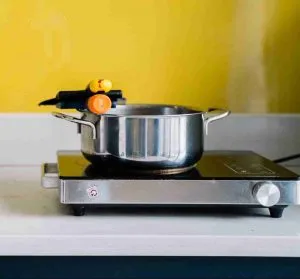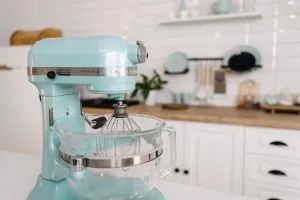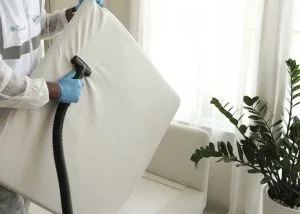Contents
ToggleWhat is a Dehumidifier, and How Does It Work?
A dehumidifier is a household appliance designed to remove excess moisture from the air. It functions by drawing in damp air, cooling it to condense the moisture, and then reheating the now-dry air before releasing it back into the room. The condensed water is then collected in a removable container or drained through a hose.
By reducing the humidity in your home, dehumidifiers can prevent a host of problems, from mold and mildew growth to damage to your furniture and other household items. To understand why dehumidifiers are so important, let’s take a closer look at their benefits.
Benefits of Using a Dehumidifier
1. Reducing Mold and Mildew Growth
Mold and mildew thrive in damp environments. By lowering the humidity in your home, a dehumidifier makes it more difficult for these pesky fungi to grow. Not only do mold and mildew look unsightly, but they can also cause health problems, especially for those with allergies or respiratory issues. If you’re struggling with mold in your bathroom, check out this article on how to get rid of mold in the bathroom ceiling.
2. Improving Indoor Air Quality
A damp and musty home isn’t just unpleasant to live in—it can also affect your health. High humidity can worsen allergy symptoms, trigger asthma attacks, and increase the risk of respiratory infections. Dehumidifiers can help improve the air quality in your home by removing excess moisture and allergens from the air.
3. Preventing Damage to Furniture and Household Items
Excess moisture can cause damage to your home and belongings, from warped wood and peeling wallpaper to rusting appliances and ruined electronics. By maintaining an optimal humidity level, a dehumidifier can help protect your furniture, décor, and other household items from moisture-related damage.
When to Use a Dehumidifier: Winter or Summer – It Depends!
As we’ve explored how dehumidifiers function and their numerous benefits, it’s time to revisit our original question: should you use a dehumidifier in the winter or summer months?
In reality, there isn’t a universal answer to this question. The best time to use a dehumidifier depends on your home’s specific requirements and the climate in which you live. Here’s a more detailed look at the factors that can influence when to use a dehumidifier:
Summer Dehumidifier Use
In most cases, you’ll likely need a dehumidifier more during the summer months. Warm temperatures tend to increase humidity levels, which can lead to a damp, uncomfortable living environment. Additionally, higher humidity levels can exacerbate issues such as mold and mildew growth, allergens, and damage to your belongings.
In the summertime, using a dehumidifier can provide several benefits, including:
- Maintaining a comfortable indoor environment by reducing excess moisture
- Preventing mold and mildew growth due to high humidity levels
- Protecting your belongings from humidity-related damage
- Improving indoor air quality by reducing allergens and musty odors
Winter Dehumidifier Use
While summer is the more common time to use a dehumidifier, certain situations may warrant using one during the winter months. If you live in a damp or humid climate, you might still experience high indoor humidity levels even when it’s cold outside. This can be especially true in spaces like basements, which are prone to retaining moisture.
Using a dehumidifier in the winter can help:
- Prevent condensation on windows and other surfaces, which can lead to mold growth and damage
- Keep humidity levels in check, preventing issues such as dampness and musty odors
- Protect your belongings and home’s structural elements from moisture-related damage
Monitoring Humidity Levels
It’s crucial to keep an eye on your home’s humidity levels and take action when necessary, regardless of the season. Aim to maintain a humidity level between 30 and 50 percent, which is considered ideal for preventing mold and mildew growth, protecting your belongings, and maintaining a comfortable living environment.
You can use a hygrometer—an inexpensive and easy-to-find tool—to measure the humidity in your home. By regularly monitoring your indoor humidity levels, you can determine when it’s best to use a dehumidifier in your specific situation. If you’re unsure about your basement’s humidity, check out this article on basement humidity.
In conclusion, the optimal time to use a dehumidifier—whether it’s winter or summer—depends on your home’s needs and the climate in which you live. By staying vigilant about your home’s humidity levels and employing a dehumidifier when necessary, you can enjoy a healthier, more comfortable living space all year round.
 | SMARTRO SC42 Professional Digital Hygrometer | CHECK PRICE |
 | KJCOOSWI 2.7in Indoor Digital Thermometer Temperature Gauge Humidistat Hygrometer | CHECK PRICE |
 | DOQAUS Digital Hygrometer | CHECK PRICE |
How to Use a Dehumidifier Effectively: Expert Tips
Now that you’re familiar with when to use a dehumidifier, let’s dive into some expert tips to ensure you use it effectively and efficiently:
1. Set the Optimal Humidity Level
To maintain a comfortable and healthy living environment, aim for a humidity level between 30 and 50 percent. Most dehumidifiers feature a built-in humidistat, which allows you to set your desired humidity level. Make sure to adjust this setting as needed, taking into account factors such as the season, your local climate, and your personal comfort preferences. Regularly monitor your home’s humidity levels using a hygrometer to ensure you maintain the optimal range.
2. Choose the Right Size Dehumidifier for Your Space
Selecting the right size dehumidifier for your space is essential for effective moisture removal. Dehumidifiers come in various sizes and capacities, measured in pints of moisture removed per day. To find the ideal dehumidifier size, consider the following factors:
- Room size: Measure the square footage of the space you want to dehumidify. Check the product specifications for the recommended room size or consult a professional for guidance.
- Humidity level: If your space is extremely damp or has visible moisture problems (such as mold, mildew, or water stains), you may need a larger capacity unit.
- Climate: If you live in a particularly humid area or have an unventilated space (like a basement), you might require a higher-capacity dehumidifier.
Choosing the right size dehumidifier will ensure effective moisture removal without wasting energy or making the room feel too dry.
3. Regularly Clean and Maintain Your Dehumidifier
Routine cleaning and maintenance are crucial for keeping your dehumidifier running efficiently and prolonging its lifespan. Here are some essential maintenance tasks:
- Empty the water collection container: Depending on the humidity level and the size of the container, you may need to empty it daily or every few days. Some dehumidifiers have an automatic shut-off feature when the container is full, while others may require manual monitoring.
- Clean the air filter: Many dehumidifiers have a washable or replaceable air filter. Clean or replace the filter as recommended by the manufacturer—usually every few weeks or months—to maintain proper airflow and prevent dust buildup.
- Inspect for frost or ice: If your dehumidifier is used in a cold environment, it may experience frost or ice buildup on the coils. Regularly check for signs of this issue, and consult the owner’s manual for guidance on how to defrost the unit if necessary. You can also find helpful tips on how to fix a dehumidifier that’s icing up in this article on dehumidifier icing up.
- Clean the exterior: Wipe down the exterior of your dehumidifier occasionally to remove dust and dirt.
By following these expert tips on using a dehumidifier effectively, you can ensure a healthier, more comfortable living environment and get the most out of your investment.
Debunking Common Misconceptions About Dehumidifiers
Before concluding our discussion on dehumidifiers, let’s address and debunk some common misconceptions that often surround these devices:
Misconception 1: Dehumidifiers Are Only Necessary in Basements
While it’s true that basements tend to be the dampest and most humid areas of a home, they’re not the only spaces that can benefit from a dehumidifier. High humidity levels and moisture-related issues can occur in various rooms, such as:
- Bathrooms: Excess moisture from showers and baths can lead to mold and mildew growth, as well as damage to fixtures and surfaces.
- Laundry rooms: The combination of damp clothes and poor ventilation can create an ideal environment for mold and mildew to thrive.
- Kitchens: Cooking and dishwashing can generate significant amounts of moisture, which can accumulate in poorly ventilated spaces.
By using a dehumidifier in these areas, you can prevent mold and mildew growth, protect your belongings, and maintain a healthier, more comfortable living environment.
Misconception 2: Dehumidifiers Use a Lot of Energy
It’s true that dehumidifiers require electricity to function, but modern units are designed with energy efficiency in mind. When shopping for a dehumidifier, look for the following features to ensure minimal energy consumption:
- Energy Star rating: Dehumidifiers with an Energy Star rating meet strict energy efficiency guidelines set by the US Environmental Protection Agency (EPA). These units use less energy than non-certified models, which can save you money on utility bills.
- Automatic shut-off: Some dehumidifiers are equipped with an automatic shut-off feature that turns off the unit when the water collection container is full or when the desired humidity level is reached. This prevents the dehumidifier from running continuously and wasting energy.
- Adjustable fan speeds: Dehumidifiers with adjustable fan speeds allow you to control the unit’s energy consumption. Lower fan speeds use less energy but may take longer to achieve the desired humidity level, while higher fan speeds are more powerful but consume more energy.
By choosing an energy-efficient dehumidifier and using it wisely, you can effectively manage indoor humidity levels without significantly increasing your energy consumption. To explore some top-rated energy-efficient dehumidifiers, check out this article on Top Dehumidifiers.
FAQ:
Should you use a dehumidifier in the winter?
Yes, you may need to use a dehumidifier in the winter, especially if you live in a damp or humid climate. Dehumidifiers can help prevent condensation, mold growth, and protect your belongings from moisture-related damage, even during colder months.
What months should you use a dehumidifier UK?
In the UK, humidity levels tend to be highest from June to August. However, you should use a dehumidifier whenever indoor humidity levels are consistently above 50 percent, regardless of the month.
When should I use a dehumidifier in winter UK?
Use a dehumidifier in the winter if you notice condensation on windows, dampness, musty odors, or mold growth. Maintaining a healthy humidity level (30-50%) is essential to prevent moisture-related issues in your home, even during the colder months.
When should I use a dehumidifier in winter or summer UK?
In the UK, you may need to use a dehumidifier more frequently during the summer months due to higher humidity levels. However, monitor your home’s humidity year-round and use a dehumidifier whenever necessary to maintain optimal indoor conditions.
How do I know if I need a dehumidifier in my home?
If you notice signs of high humidity, such as condensation on windows, dampness, musty odors, or mold growth, you likely need a dehumidifier. You can also use a hygrometer to measure indoor humidity levels and take action when levels exceed 50%.
How much does it cost to run a dehumidifier?
The cost of running a dehumidifier depends on factors like the unit’s size, energy efficiency, and local electricity rates. Energy Star-rated dehumidifiers are more energy-efficient and can save you money on utility bills. Always check the manufacturer’s specifications for estimated energy consumption.
Can I use a dehumidifier in multiple rooms?
While a dehumidifier can be moved between rooms, its effectiveness may be reduced if the unit’s capacity doesn’t match the room size. For the best results, consider investing in multiple units or a whole-house dehumidification system.
How do I choose the right dehumidifier for my home?
Consider factors like room size, humidity levels, and climate when selecting a dehumidifier. Consult the product specifications for recommended room size or consult a professional for guidance. Energy Star-rated dehumidifiers are a good choice for energy efficiency.
Can a dehumidifier help with allergies?
Yes, a dehumidifier can help alleviate allergy symptoms by reducing indoor humidity levels, which can inhibit the growth of mold, mildew, and dust mites. Maintaining a humidity level between 30-50% can create a more comfortable environment for allergy sufferers.
Wrapping It Up
In conclusion, there’s no definitive answer to the question of when to use a dehumidifier—winter or summer. The key is to monitor your home’s humidity levels and use a dehumidifier as needed to maintain a healthy and comfortable living environment. By following the tips and advice outlined in this article, you’ll be well on your way to enjoying the many benefits that dehumidifiers have to offer.























































